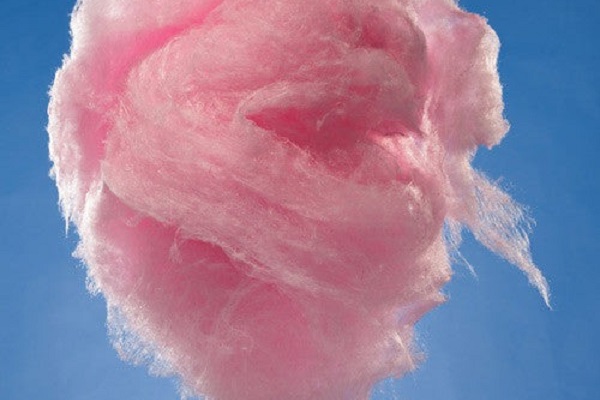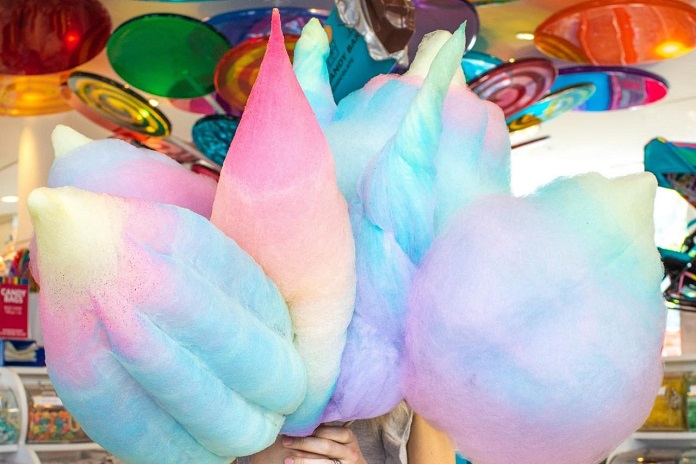On December 7 we celebrate, National Cotton Candy Day a day to is mostly sweet and airy, with a light, melt-in-your-mouth texture candy where it comes in classic pink vanilla, blue raspberry, and sometimes more adventurous options like watermelon or bubblegum. Cotton Candy is everyone’s favourite from all age groups of people however Most of our childhood memories wouldn’t have been complete without the sugary cloud that is cotton candy.
Table of Contents
ToggleWhere did cotton candy originate?
Did you know that Cotton candy also known as candy floss and has a long history? However, it was first introduced in the late 19th century. Where, the modern version was developed in 1897 by dentist William Morrison and confectioner John C. Wharton in the United States, who patented a machine to create it.
Early History
- Did you know that Cotton candy as we know it today didn’t exist in ancient times, the concept of spun sugar can be traced back to various cultures. In ancient India, sugar was used to create delicate, spun sugar decorations.
Modern Invention
- 19th-Century Innovations: The cotton candy was developed in the late 19th century. The credit for the invention of the modern cotton candy machine and its popularization often goes to two men: William Morrison and John C. Wharton.
- William Morrison: A dentist by profession, Morrison was interested in using his knowledge of sugar to create a new confection. He partnered with confectioner John C. Wharton to bring his ideas to fruition.
- John C. Wharton: Wharton was a confectioner with experience in making candy. Together with Morrison, he helped develop the first cotton candy machine.
- Patenting and Introduction: In 1897, Morrison and Wharton patented their invention—a machine that spun sugar into fine, airy strands. They introduced the machine at the 1904 St. Louis World’s Fair, where it was marketed under the name “cotton candy.” It was an instant hit, selling over 68,000 units at the fair.
Cultural Impact
- Cotton candy is known by different names in various regions. In the UK and Australia, it’s often called “candy floss,” while other places might refer to it as “fairy floss.”
- Cotton candy has become a symbol of fun and celebration, often associated with festive events and amusement parks. It’s light and whimsical nature makes it a favorite among both children and adults.
| 1897 (Dentists made the sweet treat) | Dentist William Morrison and confectioner John C. Wharton are credited for the invention of machine-spun cotton candy. |
| 1904 (Cotton Candy’s debut) | Following the invention of machine-spun cotton candy, it was finally introduced to a wide audience at the World’s Fair in St Louis, as ‘fairy floss.’ |
| 1921 (Cotton candy got its name) | It came about when a dentist, Josef Lascaux, built a machine and sold the treat to patients in his Louisiana office. |
| 1966 (That Fluffy Stuff) | The world’s biggest cotton candy manufacturer – Tootsie Roll Industries, produces bagged cotton candy called Fluffy Stuff. |

Cotton Candy recipe
Ingredients:
- Granulated sugar
- Food coloring (optional)
- Cotton candy flavouring (optional)
How to make:
- Follow the manufacturer’s instructions to preheat your cotton candy machine. This usually involves turning it on and letting it warm up for a few minutes.
- If you’re adding colour and flavour, mix a few drops of food colouring and flavouring into the granulated sugar in a bowl. Stir well to ensure even distribution.
- Carefully pour the prepared sugar into the spinning head of the cotton candy machine. Make sure not to overfill.
- As the machine spins, the sugar will begin to crystallize into cotton candy. Use a cone or stick to collect the cotton candy as it spins around the machine.
- Serve immediately for the best texture and taste.
Additional Tips:
- Use only granulated sugar; other types of sugar or sweeteners won’t work well in most machines.
- Clean the machine according to the manufacturer’s instructions after use to prevent sugar buildup.
3 Fun Reasons for Cotton Candy
-
Sugar’s the only true ingredient- When spun, cotton candy’s all white because it’s made from just sugar. Adding dye can transform the colour.
-
A thread of cotton candy is thinner than a strand of human hair- Though thin, the treat can be very long. In fact, the longest cotton candy was created in July 2009 and stretched over 1,400 meters.
-
Cotton candy has different names around the world.- In England, it’s called candy floss. In Australia and Finland, it’s called fairy floss. In the Netherlands, it’s known as suikerspin, which means “sugar spider.” Travelling to France? Call it barbe à papa, which means papa’s beard.
Conclusion
In conclusion, National Cotton Candy Day on December 7th is a perfect opportunity to enjoy this nostalgic and fun treat. With a simple recipe and a cotton candy machine, you can make your own fluffy, sweet confections at home. Whether you’re celebrating with classic flavours or experimenting with new ones, it’s a day to indulge and have fun with this whimsical treat. Happy Cotton Candy Day!
FAQs
What is cotton candy made of?
Cotton candy is made of granulated sugar. The sugar is heated until it melts, then spun rapidly in a cotton candy machine where it cools and solidifies into thin, airy strands.
Can I make cotton candy without a machine?
Making cotton candy typically requires a machine because it involves spinning sugar at high speeds to create an airy texture. However, you can try alternative methods like using a stovetop candy maker or even a hand-cranked cotton candy machine, though these can be more labour-intensive and less consistent.
Can cotton candy be made without food colouring?
Yes, you can make cotton candy without food colouring. The natural colour of the sugar or any added flavouring will be the only colour in the cotton candy.
Also, read more about National Vichyssoise Day – November 18, 2024
